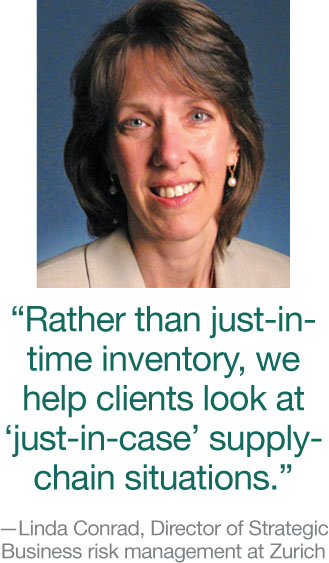 PC360-NU: Have the natural catastrophes of the past few years impacted Zurich's appetite for limits or the way you underwrite Contingent Business Interruption coverage?
PC360-NU: Have the natural catastrophes of the past few years impacted Zurich's appetite for limits or the way you underwrite Contingent Business Interruption coverage?
Conrad: It has impacted the CBI market, not only for Zurich but for all insurers. The drive came from our reinsurers who said, “We'll give you 18 months to start getting more transparency into locations, or else we won't be giving you blanket limits anymore.” So it's not just Zurich, it's the whole market. We needed to gather more information.
For example, we're asking for [more detail on] the “made-in” and “shipped-from” locations so we can geo-code them. Which of the factories that are scheduled are goods made from? And which ones are they shipped to?
Recommended For You
Want to continue reading?
Become a Free PropertyCasualty360 Digital Reader
Your access to unlimited PropertyCasualty360 content isn’t changing.
Once you are an ALM digital member, you’ll receive:
- Breaking insurance news and analysis, on-site and via our newsletters and custom alerts
- Weekly Insurance Speak podcast featuring exclusive interviews with industry leaders
- Educational webcasts, white papers, and ebooks from industry thought leaders
- Critical converage of the employee benefits and financial advisory markets on our other ALM sites, BenefitsPRO and ThinkAdvisor
Already have an account? Sign In Now
© Touchpoint Markets, All Rights Reserved. Request academic re-use from www.copyright.com. All other uses, submit a request to [email protected]. For more inforrmation visit Asset & Logo Licensing.







